30 Craziest Facts About Planet Earth You Never Knew

We all love a good sci-fi movie or intergalactic superhero epic that hurls us away to faraway planets and distant galaxies. But the fact is, there’s plenty of mind-blowing stuff happening right here on Earth.
For instance, did you know that our oceans hold more than $700 trillion worth of gold? Or that the tallest mountain in the world technically isn’t even Mount Everest? Or what about the fact that the largest living organism isn’t an elephant or a whale but actually a 2.4-mile fungus?
It’s all true. For those and more, see these 30 facts that will definitely make you truly appreciate this 197-million square-mile orb on which we live. And for more amazing facts, check out these 50 Amazing Facts for People Who Can’t Get Enough Amazing Facts.
1
Lakes Can Explode

When we think of lakes, we usually think of tranquility and summers relaxing by them—not lethal explosions. But Africa has experienced just that sort of thing over the years, when bursts of volcanic gases rise to the surface, leaving destruction in their wake.
For example, in August 1986, gases below Lake Nyos in Cameroon, which sits above the 950-mile-long chain of volcanoes known as Cameroon Volcanic Line, became concentrated and when it came to the surface, “an explosive degassing of 1.6 million tons of carbon-dioxide occurred, forming a 160 feet high cloud,” according to Forbes. It killed 1,700 people as a result. And for more crazy knowledge, check out these 40 Random Obscure Facts That Will Make Everyone Think You’re a Genius.
2
Earth Used to Be Purple
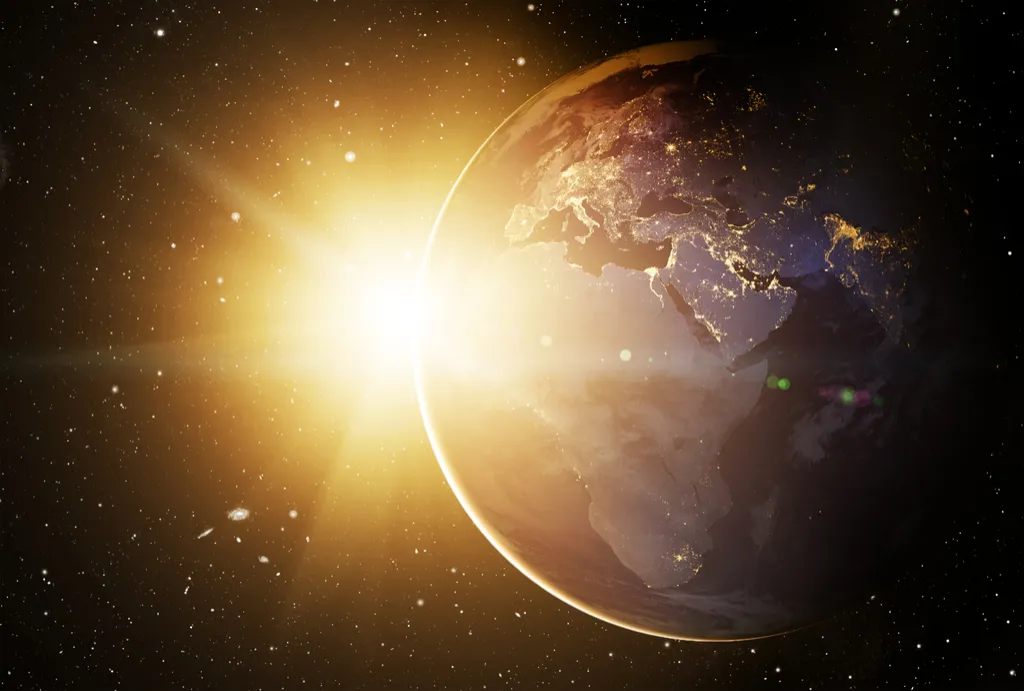
At least, that’s one scientific theory based on the idea that ancient microbes may have relied on a molecule called retinal, rather than chlorophyll, to absorb the sun’s rays. Retinal (which can be found in organisms such as halobacteria) absorbs green light and reflects back red and violent light, creating a purple color. And for more ways to deepen your knowledge about the world around you, check out these 50 Facts About Life Everyone Should Know.
3
60 Tons of Cosmic Dust Fall to Earth Daily
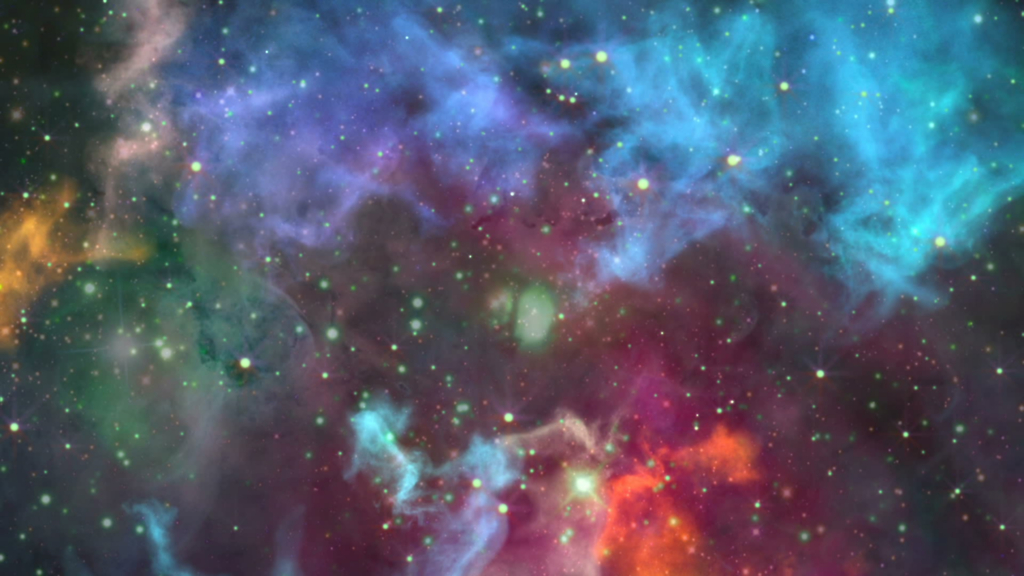
“Cosmic dust” sounds magical, but chances are you’ve inhaled a good amount of it just on your way to work. On a daily basis, dust from meteorites, comets, and other solar bodies fall to earth in tiny particles that increase the levels of sodium and iron in the planet’s atmosphere. Scientists studying the phenomenon estimate that altogether, about 60 tons of cosmic dust is falling to earth daily.
4
The Oceans Hold $771 Trillion Worth of Gold

Not that you’d be able to get at any of it. But scientists estimate that the oceans of the world contain approximately 20 million tons of gold. Not on the ocean floor—in the water itself, in tiny particles of approximately 13 billionths of a gram per liter. And for more shocking facts, check out these 30 Things You Always Believed That Aren’t True.
5
Earth Once Had Two Moons
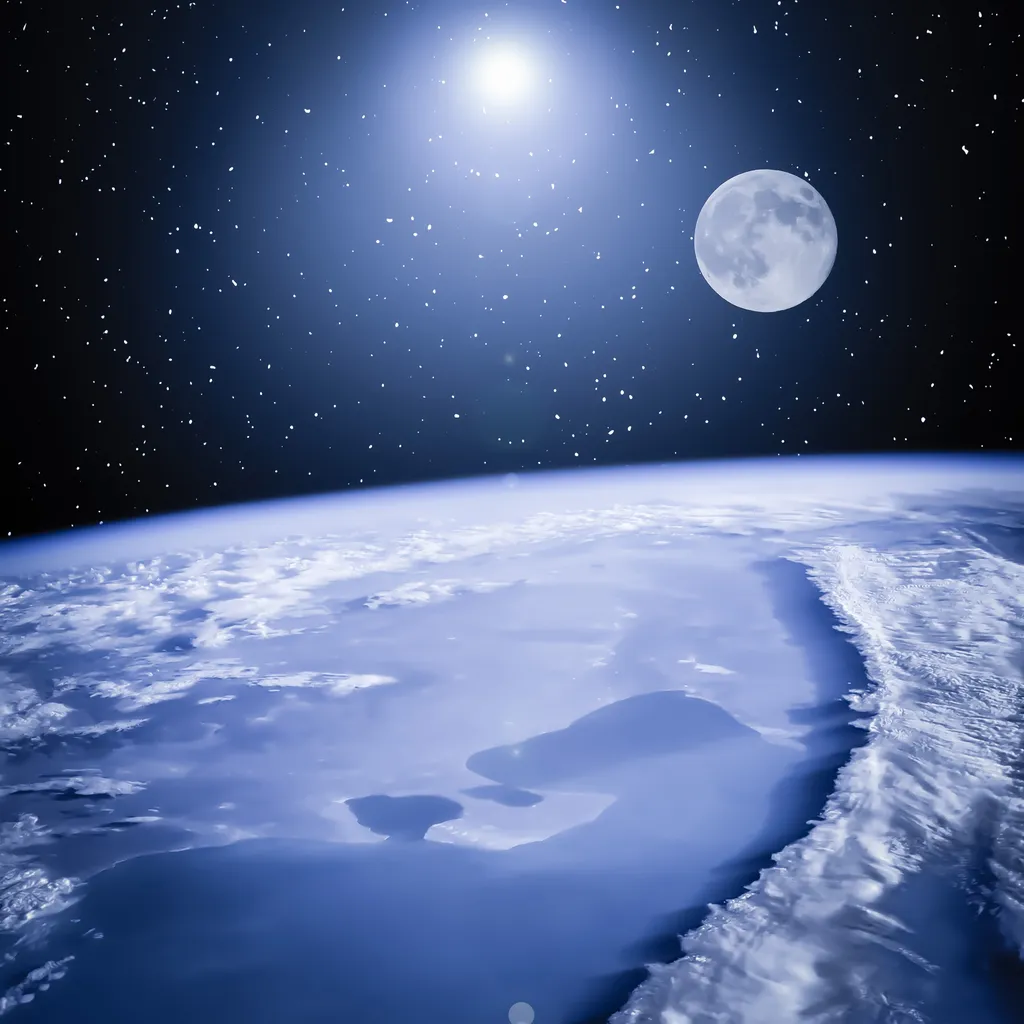
That’s the theory at least, put forward by a computer model that attempted to figure why the side of the moon that faces Earth is relatively low and flat and the one that faces away has a much thicker crust. The model suggests that there was once a “companion moon” that collided with the far side of our current moon.
6
Earth Might Still Have Two Moons

That’s right—some scientists believe we still have a second moon. That’s not to say another giant white planet in the sky, more like a small asteroid that has been pulled into the Earth’s orbit. This was found by a team of scientists running simulations on a supercomputer that determined that at least one mini-asteroid (about three feet in diameter—compared to the moon’s three thousand miles of diameter) circling the planet at any given time.
7
The Greatest Vertical Drop Is in Canada

If you’re looking for a seriously steep cliff, you’ll find it on Canada’s Baffin Island in Auyuittuq National Park in the northern part of the country. Named Mount Thor, it has a 4,000-foot rock face that has proved daunting for climbers, with 30 attempts made before a four-man team from America finally succeeded in 1985 (it only took them 33 days).
8
The Hottest Spot in the World Is in California

Though for years El Aziza, Libya was reputed as the hottest place in the world, with recorded temperatures of 136 degrees Fahrenheit in 1922. But those measurements have since been invalidated by scientists. Due to its disqualification, the honor went to Death Valley, CA, which recorded temperatures of 134 degree Fahrenheit in July 1913.
9
Earth Gets Very, Very Cold

It may not surprise you that Antartica is the coldest place on the planet, but what might surprise you is just how cold it gets there—temperatures on the East Antarctic Plateau have been found to dip to minus-133.6 degrees Fahrenheit, drawn from data acquired by NASA and the U.S. Geological Survey.
10
However, Antarctica Temperatures Can Get Up Into the 60s
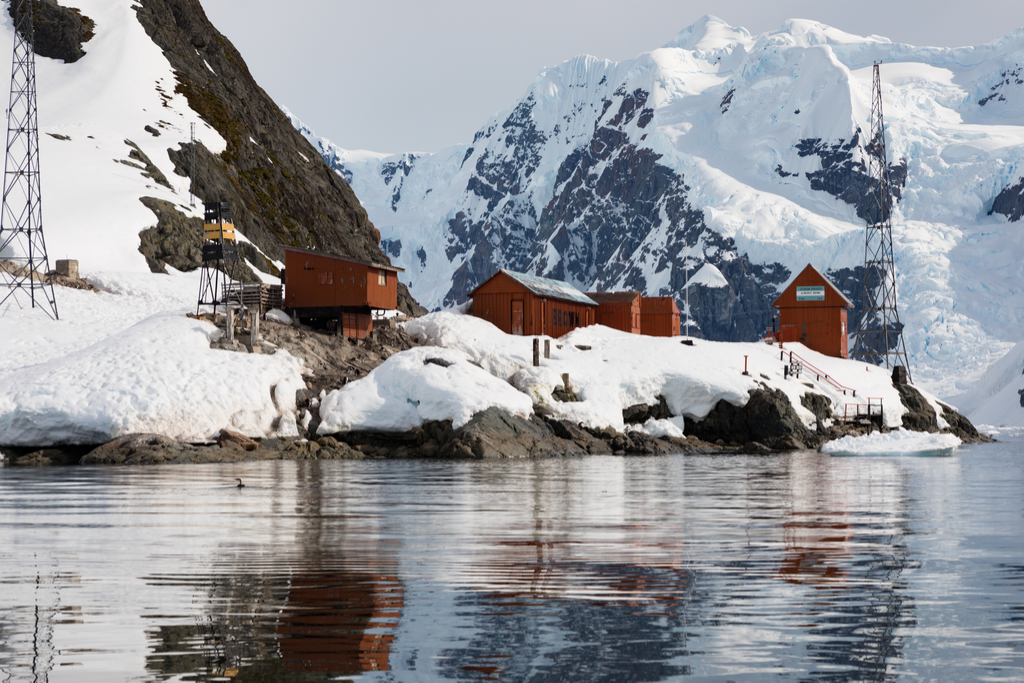
In 2015, the highest temperature for the Antarctic Continent was recorded—63.5 degrees Fahrenheit, recorded on the Argentine Research Base near the northern tip of the Antarctic Peninsula, according to the World Meteorological Organization. As it turns out, visiting Antarctica is on our list of the 25 Adventures You Should Have Before You Die.
11
Coastlines Are Disproportionately Crowded

The coasts are attractive options to live on for many reasons, from the access they offered as ports going back centuries to the great views they offer today. But according to the National Oceanic and Atmospheric Administration, while coastlines cover just 20 percent of the United States’ land area (excluding Alaska), “coastal zones” are home to more than half of the country’s population.
12
Earth Has a Spare Tire

Just like you or me, the planet has a waistline—and it bulges a bit around the middle. Adding to this is the melting ice from Antarctica and Greenland, which adds water to the oceans that are pulled toward the equator.
13
Earth Is Really Old

It’s about 4.54 billion years old.
14
Dating the Earth Is an Inexact Science

How do we know how old the planet is? As this helpful video explains, we pretty much look for the oldest bit of planet we can find (a tiny piece of zircon rock that was found in Western Australia) and use radiocarbon dating. That piece of zircon is about 4.374 billion years old, so scientists bump that up a bit when coming to their final figure of 4.54.
15
Rocks Can Walk

If a storm gets going intense enough, it can make it look as if rocks are “walking.” That’s been documented multiple times in California’s Death Valley, where conditions can occasionally be just right—not too sunny, with steady winds and standing water—for rocks, sometimes weighing hundreds of pounds, to appear to move on their own. Not so surprisingly, Death Valley made it on our list of the 5 Mysterious Places You Have to See to Believe.
16
Its Surface Is Recycled

The Earth might seem solid and permanent, but it actually goes through a full regeneration process every 500 million years or so as tectonic plates butt into each other. Oceanic crust is pressed under continental crust, creating pressure that fuels the world’s volcanoes. Over many many years, this results in a replacement of much of the planet’s surface.
17
The Deepest Place on Earth Is in the Pacific Ocean

The Mariana Trench, an underwater canyon in the western Pacific Ocean, measures 35,813 feet below sea level. It’s home to some weird stuff like sea cucumbers and plenty of other creepy things.
18
The Deepest (Non-Ocean-Covered) Place on Earth Is in Antarctica

Technically it’s not covered by ocean…but it is buried under deep layers of ice. The Bentley Subglacial Trench in Antarctica goes down 8,382 feet below sea level.
19
Earth Is Not a Perfect Sphere

The Earth is obviously not flat, but it’s not exactly round, either. It’s more of a squashed sphere, because when it spins, gravity pushes in and centrifugal force pushes out. It creates what Scientific American calls “a sphere that is squashed at its poles and swollen at the equator.”
20
There Are Parts of Earth With Less Gravity Than Others

Because of the uneven shape of the globe, the planet’s gravity is unevenly distributed, too, so some parts of the planet have been found to have lower or higher levels of gravity than others. Canada’s Hudson Bay, for example, was found to have lower gravity due to a massive ice sheet that “dented the earth 10,000 years ago, literally bending gravity” as one newspaper put it. And for more on defying gravity, check out these 20 Most Terrifying Roller Coasters in America.
21
The Largest Living Structure Is the Great Barrier Reef

A system of about 3,000 individual reefs and 900 coral islands, divided by narrow passages, this living system is the largest in the world. Spanning 1,243 miles and covering an area of 135,136 square miles, it is the only living structure on Earth that you can see from space.
22
The Largest Living Organism Is a Fungus
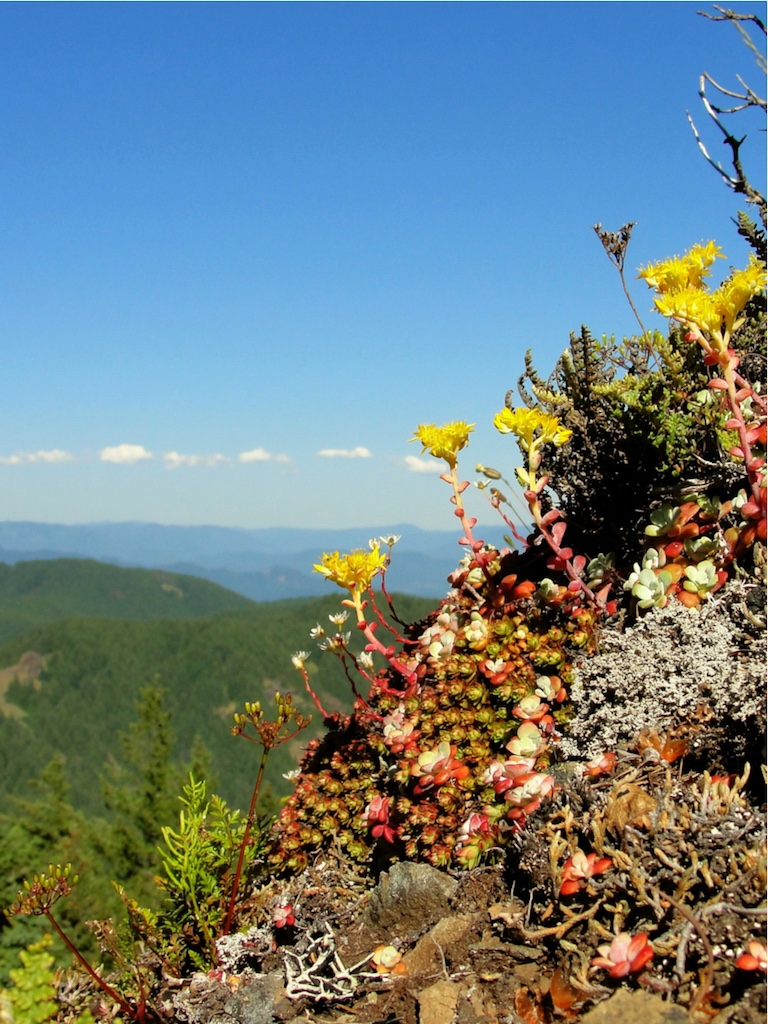
Not as cool as a giant gorilla or something, the largest living organism on the planet is actually a honey fungus that spreads across 2.4 miles in the Blue Mountains of Oregon. Though you’d just see the individual yellow-brown mushrooms sprouting on the surface, they are actually all connected to a giant organism under the surface (yes, this sounds like the stuff of nightmares).
23
The Smallest Mammal in the World Is a Bat

While the smallest living thing is some single-celled amoeba that’s too boring to talk about, the smallest mammal in the world is a kind of adorable one-inch creature known as the Kitti’s hog-nosed bat. It’s found in western Thailand and southeast Burma and spends its days in evergreen forests or limestone caves. And for more facts about our favorite furry friends, check out these 40 Amazing Animal Facts.
Image via Wikimedia Commons
24
The Largest Earthquake in the World Hit Chile

The worst earthquake to ever hit the Earth struck Chile on May 22, 1960. The 9.5-magnitude quake in Valdivia killed as many as 6,000 people and left 2 million people homeless, according to the Chilean government.
25
The Largest Earthquake in the U.S. Hit Alaska

Just four years after the world’s largest quake, the U.S. had its worst earthquake—a 9.2-magnitude one that detonated about 75 miles east of Anchorage. It caused tsunamis, avalanches, and landslides—plus eleven aftershocks. Some 139 people died as a result.
26
Fresh Water Is Disappearing

Okay, it’s not exactly Mad Max, but as glaciers retreat as a result of climate change, they are taking fresh water supplies with them. Take, for example, the Canadian Arctic, which contributes 10 percent of the world’s melting ice, yet was found to lose a massive volume (equal to about 75 percent of Lake Erie) between the years of 2004 and 2009.
27
The Grand Canyon Is Not the Deepest Canyon In the World

Though a stunning sight, this natural treasure is neither the deepest nor the widest canyon in the world. That distinction goes to Tibet’s Yarlung Tsangpo, which is around 30 miles longer than the southwestern gorge and drops 17,567 feet—more than two miles deeper than the Grand Canyon.
28
The Tallest Mountain in the World Is Not Mount Everest
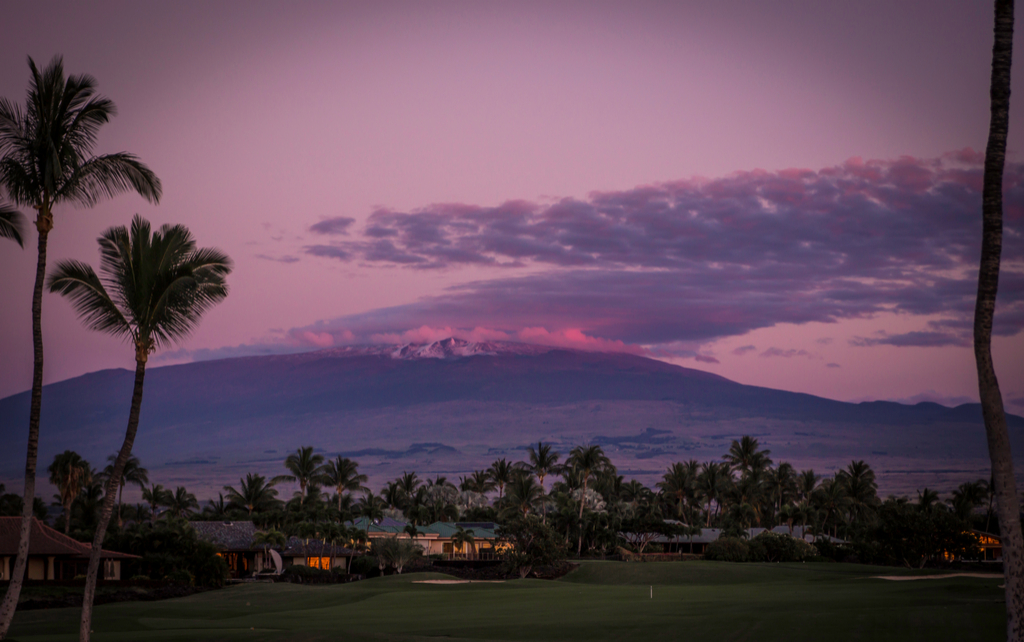
Though it is the highest mountain in the world (at 29,029 feet above sea level), it is not the tallest. That distinction goes to Hawaii’s Mauna Kea Volcano, which measures 33,476 feet from its base to its top. It’s a great place to take in views of the night sky thanks to the very dry atmosphere, and a popular spot for both amateur astronomers and snowboarders.
29
Hawaii Is Also Home to the Most Active Volcano

Speaking of Hawaii, the Aloha State also is where you will find Kilauea, the most active volcano on Earth, with 61 eruptions recorded in its current cycle, according to the U.S. Geological Survey—and it’s been erupting continuously since 1983.
30
A Massive Eruption Killed 71,000 People (Not That Long Ago)

While Mount Vesuvius’ destruction of Pompeii is perhaps more infamous, its death toll was a fraction of the devastation wrought by Indonesia’s Mount Tambora. The 13,000-foot-high volcano blew in 1815, raining down lava on the surrounding island and killing an estimated 10,000 people instantly (with some estimates going as high as 71,000) in what is officially called a “super-colossal” eruption.
To discover more amazing secrets about living your best life, click here to sign up for our FREE daily newsletter!